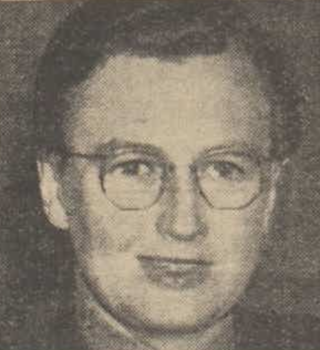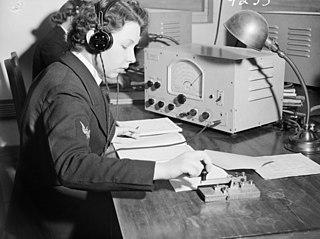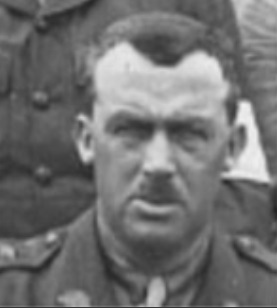Related Research Articles

The Royal Australian Navy (RAN) is the naval force of the Australian Defence Force (ADF). The professional head of the RAN is Chief of Navy (CN) Vice Admiral Mark Hammond AM, RAN. CN is also jointly responsible to the Minister of Defence (MINDEF) and the Chief of Defence Force (CDF). The Department of Defence as part of the Australian Public Service administers the ADF.

Colonel Matron Kathleen Annie Louise Best, was the first director of the Women's Royal Australian Army Corps.

The Bangka Island massacre was the killing of unarmed Australian nurses and wounded Allied soldiers on Bangka Island, east of Sumatra in the Indonesian archipelago on 16 February 1942. Shortly after the outbreak of World War II in the Pacific troops of the Imperial Japanese Army murdered 22 Australian Army nurses, 60 Australian and British soldiers, and crew members from the Vyner Brooke. The group were the only survivors from their steamship which had been sunk by Japanese bombers just after the defeat of Singapore. After surrendering to local Japanese forces on Bangka Island, which was then part of the Dutch East Indies, the group and its wounded were taken to a beach where they were killed by being bayonetted and machine gunned in the surf. Only South Australian nurse Sister Lieutenant Vivian Bullwinkel, American Eric Germann and Royal Navy Stoker Ernest Lloyd survived.

Dame Ivy Evelyn Annie Wedgwood, was an Australian politician who served as a Senator for Victoria from 1950 to 1971, representing the Liberal Party. She was the first woman to represent Victoria in the Senate and the first woman to chair a select committee.

The Women's Royal Australian Naval Service (WRANS) was the women's branch of the Royal Australian Navy (RAN). In 1941, fourteen members of the civilian Women's Emergency Signalling Corps (WESC) were recruited for wireless telegraphy work at the Royal Australian Navy Wireless/Transmitting Station Canberra, as part of a trial to free up men for service aboard ships. Although the RAN and the Australian government were initially reluctant to support the idea, the demand for seagoing personnel imposed by the Pacific War saw the WRANS formally established as a women's auxiliary service in 1942. The surge in recruitment led to the development of an internal officer corps. Over the course of World War II, over 3,000 women served in the WRANS.

Joseph Palmer Abbott was an Australian politician. He was a member of the Country Party and served in the House of Representatives from 1940 to 1949, representing the Division of New England. During World War II he briefly held ministerial office as Minister for Home Security and assistant minister to the defence and army ministers.
The Hamilton and Alexandra College is an independent, private non-profit, co-educational day and boarding school located in Hamilton, Victoria, Australia.

Women currently make up 19.2% of the ADF workforce. Women have served in Australian armed forces since 1899. Until World War II women were restricted to the Australian Army Nursing Service. This role expanded in 1941–42 when the Royal Australian Navy (RAN), Australian Army and Royal Australian Air Force established female branches in which women took on a range of support roles. While these organisations were disbanded at the end of the war, they were reestablished in 1950 as part of the military's permanent structure. Women were integrated into the services during the late 1970s and early 1980s, but were not allowed to apply for combat roles. In January 2013, serving women were allowed to apply for all positions in the Australian Defence Force (ADF) except special forces which became open to women in January 2014. In January 2016, civilian women became able to direct entry to all positions.
Vice-Admiral Sir Richard Hayden Owen Lane-Poole was a senior officer in the Royal Navy. He was the Rear Admiral Commanding His Majesty's Australian Squadron from 1936 to 1938.
Olive Eva Anstey was an Australian hospital matron.

Grace Margaret Wilson was a high-ranked nurse in the Australian Army during World War I and the first years of World War II. Wilson was born in Brisbane, and completed her initial training as a nurse in 1908. After the outbreak of World War I she joined the Australian Army Nursing Service (AANS) and subsequently transferred to the First Australian Imperial Force. From 1915 until 1919 she was the principal matron of the 3rd Australian General Hospital. She served as the temporary matron-in-chief in the AIF Headquarters, London from late 1917 until early 1918. Wilson returned to Australia in 1920 and left the AIF to work in civilian hospitals. She was appointed the matron-in-chief of the AANS in 1925, and in September 1940 joined the Second Australian Imperial Force. She served in the Middle East until August 1941, when she returned to Australia due to ill health. She left the Army the next month, but from September 1943 worked in the Department of Manpower Directorate (Victoria)'s nursing control section.
Katrina Zepps was an Australian nurse (general), nurse educator and refugee. She was born in Hlukhiv and died in Turramurra, Sydney, New South Wales, Australia.

Vice Admiral Sir Alan Wedel Ramsay McNicoll, was a senior officer in the Royal Australian Navy (RAN) and a diplomat. Born in Melbourne, he entered the Royal Australian Naval College at the age of thirteen and graduated in 1926. Following training and staff appointments in Australia and the United Kingdom, he was attached to the Royal Navy at the outbreak of the Second World War. As torpedo officer of the 1st Submarine Flotilla in the Mediterranean theatre, McNicoll was decorated with the George Medal in 1941 for disarming enemy ordnance. He served aboard HMS King George V from 1942, sailing in support of several Arctic convoys and taking part in the Allied invasion of Sicily. McNicoll was posted for staff duties with the Admiralty from September 1943 and was involved in the planning of the Normandy landings. He returned to Australia in October 1944.
Vice Admiral Robert Andrew Kevin Walls, was a senior officer of the Royal Australian Navy (RAN). In 42 years of service, Walls commanded HMA Ships Tobruk, Moreton and Brisbane, and served as Deputy Chief of Naval Staff and Maritime Commander Australia, before his career culminated in his appointment as Vice Chief of the Defence Force from April 1995 until his retirement in March 1997.

Joan Stevenson (Judy) Abbott, was an Australian army hospital matron during the Second World War.

Sir Thomas George Wilson was an Australian obstetrician and gynaecologist. He was a founding fellow of Royal Australasian College of Surgeons, the Royal College of Obstetricians and Gynaecologists and State Nurses Registration Board of South Australia.

Annie Moriah Sage, was an Australian nursing administrator and Matron-In-Chief in the Second Australian Imperial Force during the Second World War. She was a recipient of the Florence Nightingale Medal, honoured as a member of the Royal Red Cross and was appointed a Commander of the Order of the British Empire.
Rear Admiral Frederick Tickell, was a senior officer of the Royal Australian Navy.

Annie Ina Laidlaw was an Australian nursing matron who led the Royal Australian Naval Nursing Service during the Second World War.
References
- ↑ Fairfax, Denis (1979). "William James Carr (1883–1966)". Australian Dictionary of Biography . Vol. 7. Canberra: National Centre of Biography, Australian National University. ISSN 1833-7538 . Retrieved 9 December 2023.
- 1 2 Vines, Patricia C. (2000). "Annie Ina Laidlaw (1889–1978)". Australian Dictionary of Biography . Vol. 15. Canberra: National Centre of Biography, Australian National University. ISSN 1833-7538 . Retrieved 9 December 2023.
- ↑ "Publication:Semaphore – Issue 19, 2006 – Royal Australian Navy". 14 May 2009. Archived from the original on 14 May 2009. Retrieved 9 December 2023.
- ↑ "Matron Annie Laidlaw". www.navy.gov.au. Royal Australian Navy. Retrieved 9 December 2023.